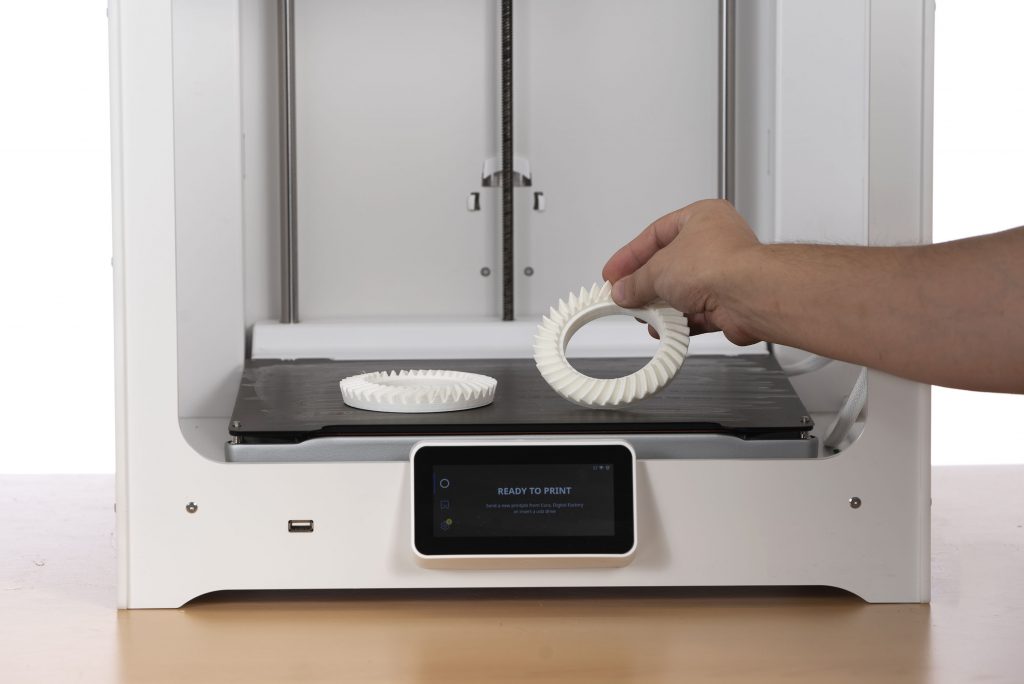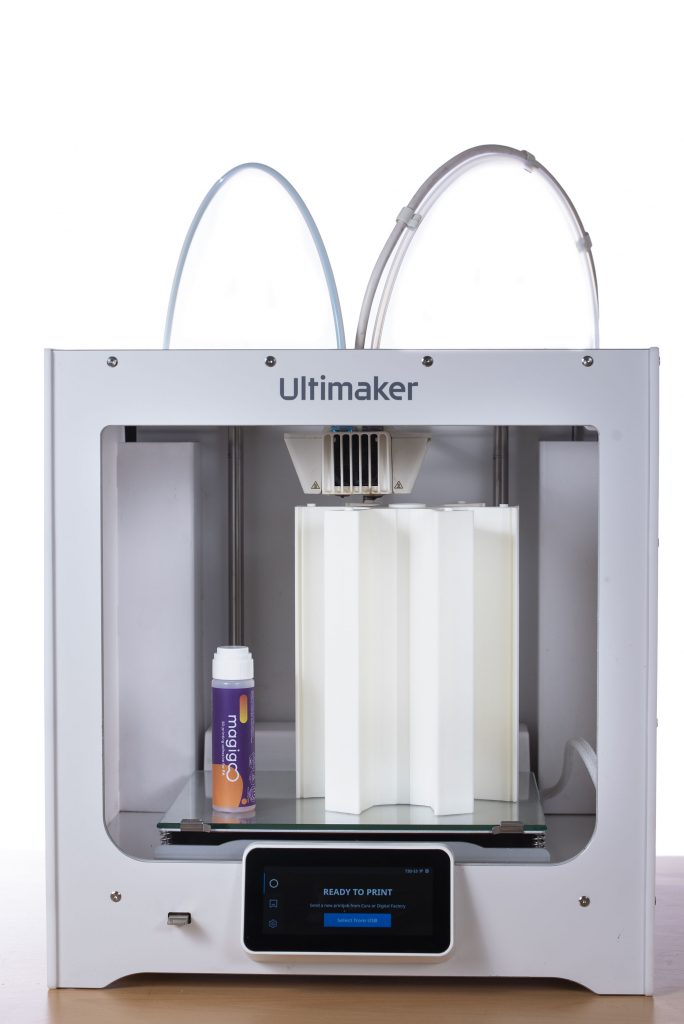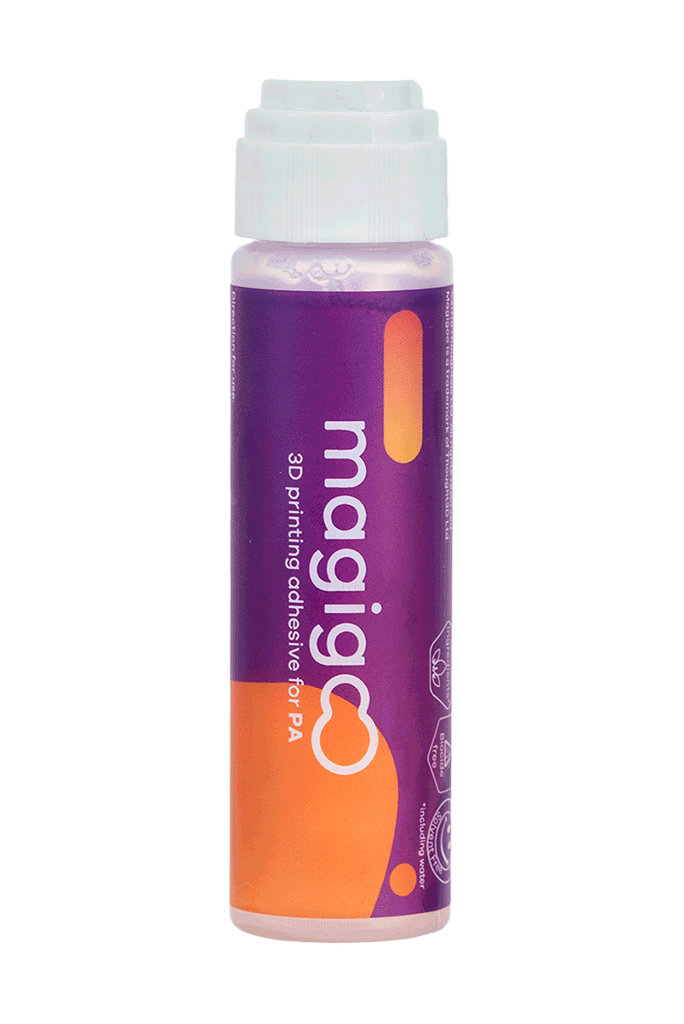Durable and long lasting 3D prints – Nylon as a functional material
In this article we will be looking at Nylon and it’s excellent material properties. Nylon material is sometimes overlooked as it might require more attention when it comes to 3D printing. However with the right tools and approach this material can be easily and reliably used to create functional, durable and long lasting 3D prints.
What is Nylon?
Nylon also knowns as Polyamide (PA), is a thermoplastic material that comes in various formulations such as PA-6, PA-6,6 PA-12 and other co-polymers. Parts made of nylon are tough, durable, have high impact resistance and offer good resistance to wear due to Nylon’s naturally low coefficient of friction and abrasion resistance. Some nylon grades are also filled with carbon fibers (CF) or glass fibers (GF). The addition of these filler materials improves the stiffness of the material at the expense of other properties such as flexibility and friction coefficient.
Nylon also shows good chemical resistance and even thermal resistance. As a result, nylon finds itself being used in a variety of applications:
- Plastic gears – The low coefficient of friction combined with the light weight and strength makes this material an excellent choice for this applications
- Zip ties – This engineering solution for everything that needs to be fixed in place is made from the strong yet tough nylon!
- Low and medium load mechanical parts – Nylon parts are often used to replace metal parts under low load conditions. Examples include machine screws, gaskets and cast components
- Bushings and bearings – The low friction coefficient and wear resistance of nylon make it ideal for these parts
- Automotive components – Due to its mechanical properties and chemical resistance, nylon is frequently used for parts in the engine compartment of vehicles
Creating durable and long lasting 3D prints – Nylon in FDM printing
While Nylon could be used to create durable and long lasting 3D prints for a variety of applications including prototyping and end use parts, it is sometimes overlooked due to its reputation of being tricky to print with. However, with the advancements in 3D printing technology, materials, and the right tools Nylon parts can be printed as easily as PLA parts.
Why print Nylon?
FDM printed nylon parts can show exceptional mechanical properties, especially when compared to other materials such as PLA and ABS. Nylon is frequently used to print gears and other high wear components and is also used to produce functional prototypes. The table below shows the mechanical properties of some neat Nylons compared to the mechanical properties of other common 3D printing materials.
| Material | Nozzle (˚C) * | Bed (˚C)* | Young’s Modulus (Mpa)* | Ultimate Tensile Strength (Mpa)* | Elongation (%)* |
| Addigy F1030 | 230 | 80-120 | 860 | 37 | 110 |
| Addigy F1070 | 260 | 80-100 | 2120 | 50 | 15 |
| Polymaker PolyMide COPA | 250-270 | 25-50 | 2223 | 66.2 | 9.9 |
| Taulman3D 910 | 250 | 25-50 | 502.8 | 55.8 | 31 |
| Ultimaker Nylon | 230-260 | 60-70 | 579 | 34.4 | 210 |
| Matterhackers Nylon Pro | 240-260 | 60 | / | 36.2 | 34 |
| Luvocom 3F PAHT 9825 NT | 260-285 | 60-80 | 3400 | 85 | 3.6 |
| PLA | 195-215 | 60 | 2636 | 45 | 1.9 |
| ABS | 230-250 | 85-110 | 2147 | 33.3 | 2.7 |
| PET-G | 220-240 | 60-90 | 1472 | 31.9 | 6.8 |
*the values presented in this table were obtained from the manufacturers’ websites and data sheets. Since manufacturers can use different testing methods, some values cannot be directly compared and only serve to give an indication of the mechanical properties. Furthermore the mechanical properties of the printed part will depend greatly on the printing parameters and orientation of the printed part.
How hard is it to 3D print nylon?
While Nylon is a very versatile material and excels in a variety of mechanical, thermal and chemical properties it does have its pitfalls. Nylon does need some extra care when it comes to printing, handling and storage.
What do you need to print nylon?
With some exceptions most nylons require a nozzle temperature above 250 ˚C . An all metal hot end is suggested when printing with this material. Some nylons can also be printed without the use of a heated bed. However other grades of Nylon can sometimes require the use of a heated bed to up to 100 ˚C .
Do you need an enclosure to 3D print nylon?
In most cases it suggested that an enclosed chamber is used for Nylons but some grades do not have this requirement. It is best to check the manufacturer recommendations in their technical data sheets.
Do you need to dry Nylon?
Printing with wet filament can result in parts with poor surface finish, diminished mechanical properties and excessive stringing. Nylon filaments are among the most susceptible 3D printing materials due to the large amount of water they absorb in a short amount of time. You can learn more about the effect of moisture on FDM filaments here.
Usually filament spools need to be dried within a few hours of being left outside. A number of devices exist to keep the filament dry during printing and can be especially useful for long prints (>24 hours). However, the Nylon would still need to be dried before use, even if the spool is new. In fact, nylon needs to be dried in an oven for at least 8 hours at 80 ˚C. Alternatively one can use Drywise to dry the material as it is printing without needing to wait for it to dry beforehand and without needing any specialized storage solutions.

How do you stop nylon from warping during 3D printing?

Since Nylon is a slippery material, this also means that it usually does not adhere well to other surfaces. While there are some exceptions, most Nylons require a specialized adhesion solution to prevent warping. It is also recommended to use a printer with an enclosed chamber and to disable active part cooling. While each filament will require different methods to improve adhesion, other useful suggestions include:
- Use a brim: For the some Nylon materials medium sized and large prints can benefit from using a 10-20 mm brim.
- Start high then go low: Some PA materials benefit from using an additional 10 ˚C for the first layer on both the build-plate and the nozzle. This helps the first layer adhere better but prevents warping and other problems related to excessive printing temperatures.
- Print slowly on the first layer: Most materials tend to show better first layer adhesion when the first layer is printed slowly (10-20 mm/s)
- Use a heated chamber: Some Nylon materials can benefit greatly from the use of a heated chamber.
Magigoo PA is one of our adhesives and specifically designed for use when 3D printing with Nylon filaments. For optimum adhesion with Nylon filaments we suggest that you find the optimum build-plate temperature using this method or else check out our tested materials database!
We hope you found this post interesting feel free to drop us any questions on info@magigoo.com

